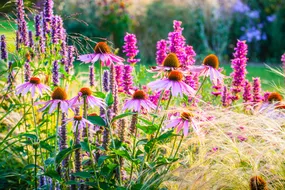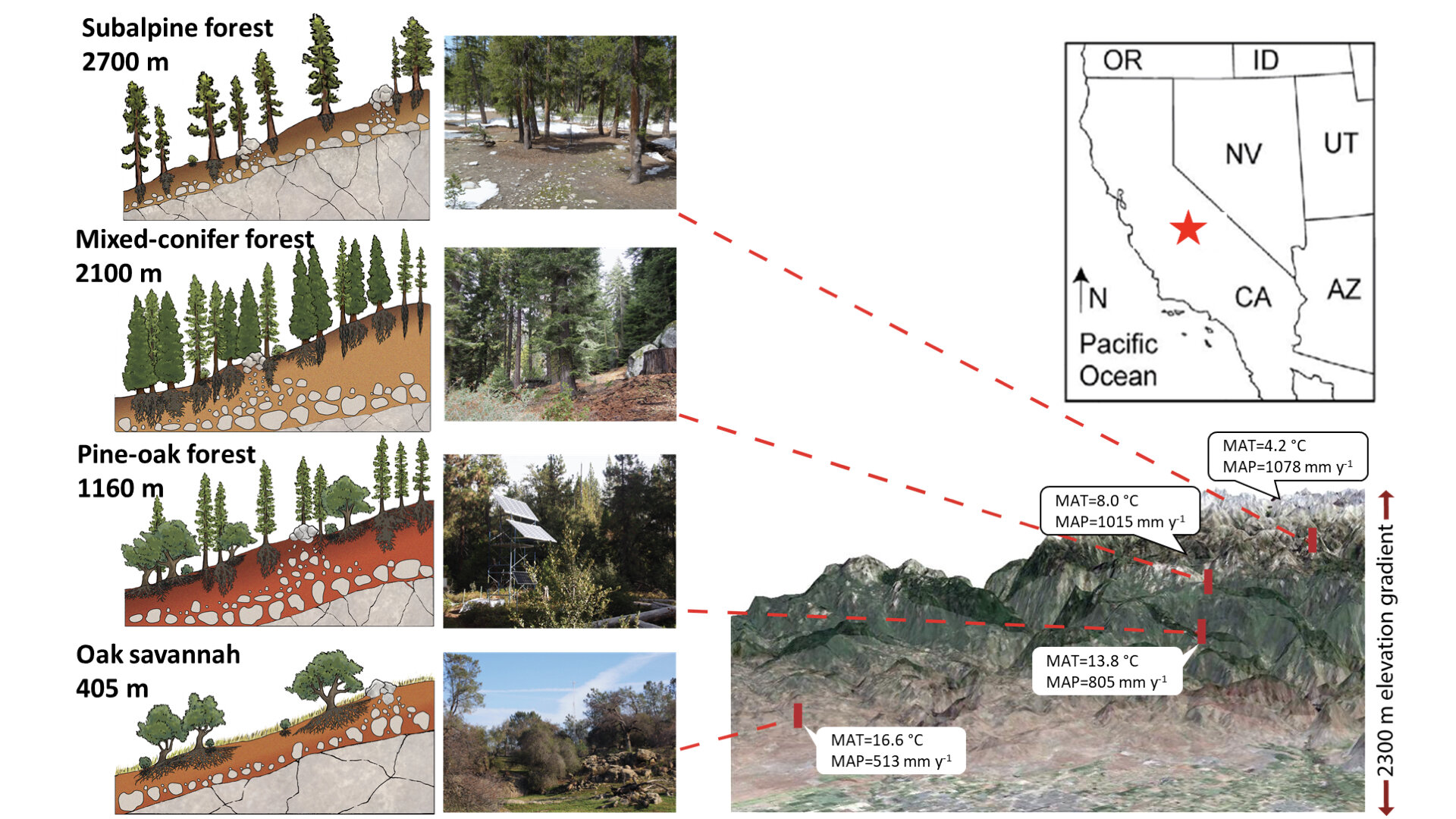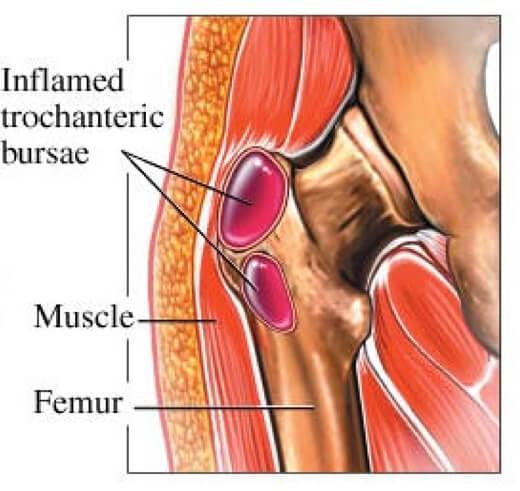Researchers at Queen’s University Belfast have developed a plastic film that can kill viruses that land on its surface with room light. The self-sterilizing film is the first of its kind—it is low cost to produce, can be readily scaled and could be used for disposable aprons, tablecloths, and curtains in hospitals. It is coated with a thin layer of particles that absorb UV light and produce reactive oxygen species—ROS. These kill viruses, including SARS-CoV-2.
Category Archives: Uncategorized
Go to the edge of the cliff and jump off. Build your wings on the way down
Go to the edge of the cliff and jump off. Build your wings on the way down.
–Ray Bradbury
Why Landscape Fabric Should be Avoided in a Garden

Landscape fabric causes ecosystem damage and limits functionality. There are better options for suppressing weeds.
Source: Why Landscape Fabric Should be Avoided in a Garden
There are better ways to keep weeds down and create a low maintenance space. Start by avoiding spacing your plants in an area covered with landscape fabric and imported mulch. Instead, choose eco-friendly and sustainable natural options to make your life easier in the garden.
- Select a diverse range of plants suited to your location. Perennials and self-seeders will help to create a more affordable and low maintenance scheme that just gets better over time.
- Combine plants to create areas of dense, layered planting, with less space for weeds. By choosing the right combinations of plants for your polyculture (which will not compete overly with one another), you can sow more densely, with a layered planting scheme.
- Use ground cover planting to protect the soil and reduce weed growth.
- Line beds, borders, or pathways with spring bulbs or other plants to suppress grass and weed ingress into growing areas.
- Choose organic mulches wisely to suit the setting, and ideally source materials from elsewhere in your garden or as close to home as possible. Thick organic mulches won’t eliminate weeds entirely but they can help to keep them under control, while adding fertility and conserving water in the soil.
Drought increases microbe-laden dust landing in Sierras
Dust from all over the world is landing in the Sierra Nevada mountains carrying microbes that are toxic to both plants and humans.
Source: Drought increases microbe-laden dust landing in Sierras
Dissolving implantable device relieves pain without drugs: New device has the potential to provide an alternative to opioids and other highly addictive drugs — ScienceDaily
Researchers have developed a small, soft, flexible implant that relieves pain on demand and without the use of drugs. The first-of-its-kind device could provide a much-needed alternative to opioids and other highly addictive medications. It works by softly wrapping around nerves to deliver precise, targeted cooling, which numbs nerves and blocks pain signals to the brain. After the device is no longer needed, it naturally absorbs into the body — bypassing the need for surgical extraction.
Hip Trochanteric Bursitis – A Runner’s Approach | Runnerclick
Like other large, mobile joints, the hip is more prone to overuse, injury, & other ailments, like hip bursitis. Find out more on the article!
Source: Hip Trochanteric Bursitis – A Runner’s Approach | Runnerclick
This is what I’ve got, with no MM involvement. It’s painful but getting better by itself, more or less. Need to be doing exercises for that hip, and a less inflammatory diet. ie. cut out sugar and carbs mostly. Which I should be doing anyways. I think it comes from the way I walk on that leg, because the knee isn’t quite right, and when I use the cane I actually put a lot of weight in that side.
Native plant gardening for species conservation

Declining native species could be planted in urban green spaces. Researchers from the German Centre for Integrative Biodiversity Research (iDiv), the Martin Luther University Halle-Wittenberg (MLU), Leipzig University and other institutions describe how to use this great potential for species protection. In their most recent study, published in the journal Nature Sustainability, they recommend practical conservation gardening methods in a bid to restructure the horticultural industry and reverse plant species declines.
googletag.cmd.push(function() { googletag.display(‘div-gpt-ad-1449240174198-2’); });Despite global efforts to protect biodiversity, many plant species are still declining. In Germany, this includes 70 percent of all plant species, with almost a third (27.5 percent) threatened, and 76 species are already considered extinct. Much of this loss can be attributed to the decline in natural habitats, in part due to increasing urbanization. Ten percent of the total area of Germany, for example, is settlement area.
However, it is precisely these settlement areas that hold enormous—albeit untapped—potential for nature conservation. After all, these areas include millions of private gardens, balconies and green roofs, as well as parks and other public green spaces. Researchers from iDiv, the Universities of Halle and Leipzig and other institutions propose using these potentially available areas for conservation gardening.
Quantum magnets in motion

The behavior of microscopic quantum magnets has long been a subject taught in lectures in theoretical physics. However, investigating the dynamics of systems that are far out of equilibrium and watching them “live” has been difficult so far. Now, researchers at the Max Planck Institute of Quantum Optics in Garching have accomplished precisely this, using a quantum gas microscope. With this tool, quantum systems can be manipulated and then imaged with such high resolution that even individual atoms are visible. The results of the experiments on linear chains of spins show that the way their orientation propagates corresponds to the so-called Kardar-Parisi-Zhang superdiffusion. This confirms a conjecture that recently emerged from theoretical considerations.
Heart progenitors spontaneously regenerate cardiac muscle via a tight junction ‘honeycomb’ in salamanders

However, investigating the dynamics of systems that are far out of equilibrium and watching them “live” has been difficult so far. Now, researchers at the Max Planck Institute of Quantum Optics in Garching have accomplished precisely this, using a quantum gas microscope. With this tool, quantum systems can be manipulated and then imaged with such high resolution that even individual atoms are visible. The results of the experiments on linear chains of spins show that the way their orientation propagates corresponds to the so-called Kardar-Parisi-Zhang superdiffusion. This confirms a conjecture that recently emerged from theoretical considerations.
Martin Vaughn-James
https://www.nybooks.com/daily/2022/04/29/the-racing-brain-of-martin-vaughn-james/
Just finished reading the reissue of The Projector/Elephant. Marvelous clear line surreal art. Here’s a page from The Projector.


